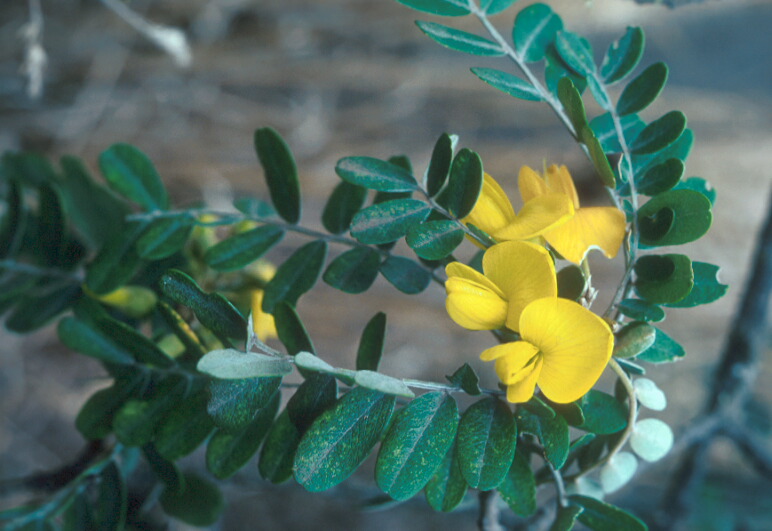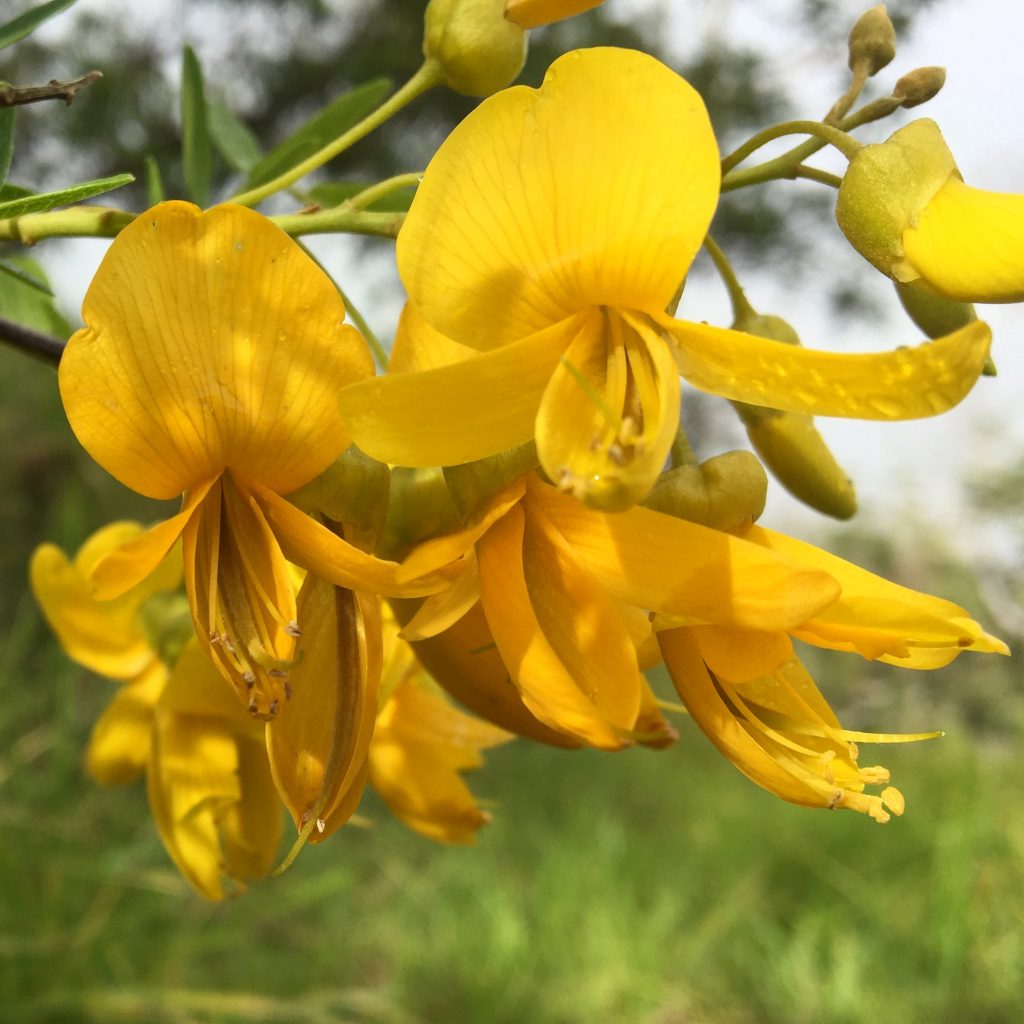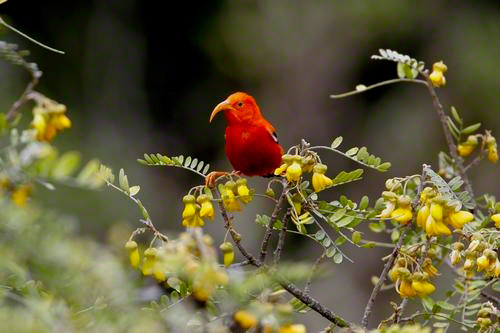Māmane
Names
- ʻŌlelo Hawaiʻi: Māmane
- Scientific: Sophora chrysophylla
Conservation Status
- NatureServe Heritage Rank G3 – Vulnerable
Species Information
Māmane is endemic to Hawai’i and part of the Fabaceae family. It can grow in the form of a large shrub or a tree. It can reach a height of 15 m (49 ft) in tree form. The tree blooms with yellow flowers in winter and spring. Māmane plant parts are a main food source for an endangered honeycreeper on Hawaii island, the Palila (Loxiodes balleui). This species is fire tolerant, though it is not adapted to grazing by feral goats and sheep. Wood and flowers of the Māmane tree were used in many facets of early Hawaiian life. Flowers were used medicinally as an astringent and to make lei, while wood was used to construct houses, farm spades, scraping boards, and firewood. Māmane wood was also used to fashion sleds in a sport for aristocrats called hōlua. Competitors would get a running start then jump on the sled headed downhill. The person who gained the greatest distance was crowned the winner.
Distribution
Māmane is found on all the main Hawaiian islands except Kaho’olawe and Ni’ihau. Most commonly, Māmane can be found in the subalpine areas of east Maui and Hawaii. It is the dominant tree in the high-elevation dry forest of Mauna Kea.
Habitat
Māmane can be found growing within dry shrubland and in mesic and wet forests at elevations between 426 to 3,048 m (1,400 and 10,000 feet).
Threats
Not sure
Plans & Projects
References & Additional Resources
Hawai‘i in the National Big Tree Program » Māmane




